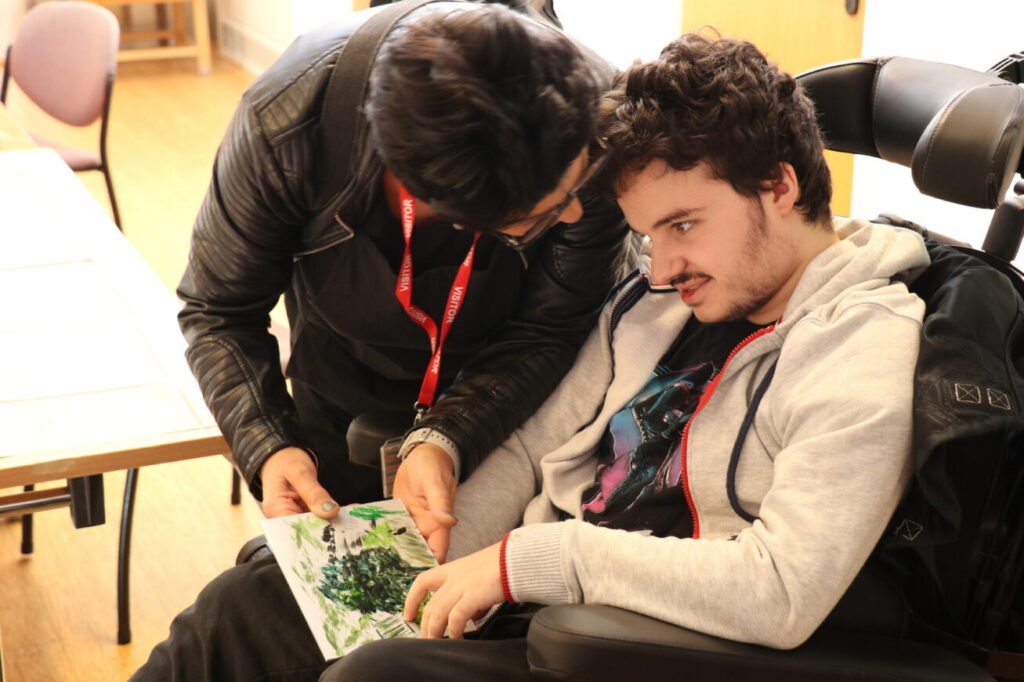Three key things we’re doing to get safeguarding right
This week, 20-24 November, is Safeguarding Adults Week. To mark the occasion, our head of safeguarding Steve Kiekopf, has written this blog about three ways to make sure your organisation is a safe environment.

Across all Sense services – from residential care to Virtual Buddying – we take time to understand each other, no matter the differences in how we communicate or experience the world.
No matter what service our staff are providing, we need to make the people we support are safe. That’s where safeguarding comes in.
There are challenges to this when supporting people with communication challenges and no formal language. How do we recognise and know when someone is unhappy, or may be at risk of abuse?
Here are some of the key ways that we make sure we’re getting safeguarding right at Sense.
1. We make safeguarding personal to everyone in the organisation
Our comprehensive safeguarding guidance is embedded in our policies and procedures, to protect the people we support from any form of abuse.
People with complex disabilities can be particularly vulnerable and may find it a challenge to tell people about abuse. That’s why it’s important that everyone at Sense is aware of their role in safeguarding. Safeguarding is everybody’s business.
All staff, before they start, are provided with a pocket guide on safeguarding and reporting and are encouraged: ‘If it does not look right, report it’.
We work hard to create an open and honest work environment, where everyone feels safe to challenge inappropriate attitudes and behaviours.
We also make sure everyone at Sense understands the different ways a person with non-formal communication might raise a safeguarding concern.
“We involve people in their own safeguarding. For adults with complex disabilities, safeguarding is also about being independent and making their own choices.”
Finally, we involve people in their own safeguarding. For adults with complex disabilities, safeguarding is also about being independent and making their own choices, following the basic principle: ‘No decision about me, without me’.
For example, where some organisations avoid risk at all costs, we believe in managing risk, and including people in their own decision-making. This includes supporting people to try new things and taking informed risks.
2. We take care to get it right from the start by hiring the right people
Safeguarding begins with the hiring process. It’s crucial to hire people who will uphold our standards.
That’s why we use a values-based approach to recruitment. When we’re interviewing support staff, we focus on the attitudes, values and behaviours of our applicants.
We look for people who:
- Recognise people’s diversity and treat everyone with dignity and respect.
- Focus on people’s abilities and not their disabilities.
- Work inclusively and collaboratively.
- Adapt their communication to suit each person’s individual needs.
3. We monitor, review – and always keep learning
Sense was the first charity to set up an internal safeguarding board, and we have developed robust monitoring systems for all our services.
However, no organisation can rest on its laurels. As the independent chair of our Safeguarding Board, Bridget Warr CBE, explained in a review of Sense:
“It is tempting to assume that well run, quality focussed organisation such as Sense would never develop closed cultures, but experience shows that no organisation, management team or Trustee body should be complacent.”
We live by that philosophy. We’re proud of our record of keeping people safe, but we’re focused on the future.
We continue to develop and train staff, to update our resources and to always follow best practice.
Safeguarding Adults Week 2023
Find out more about what safeguarding is, and how to raise an issue.

